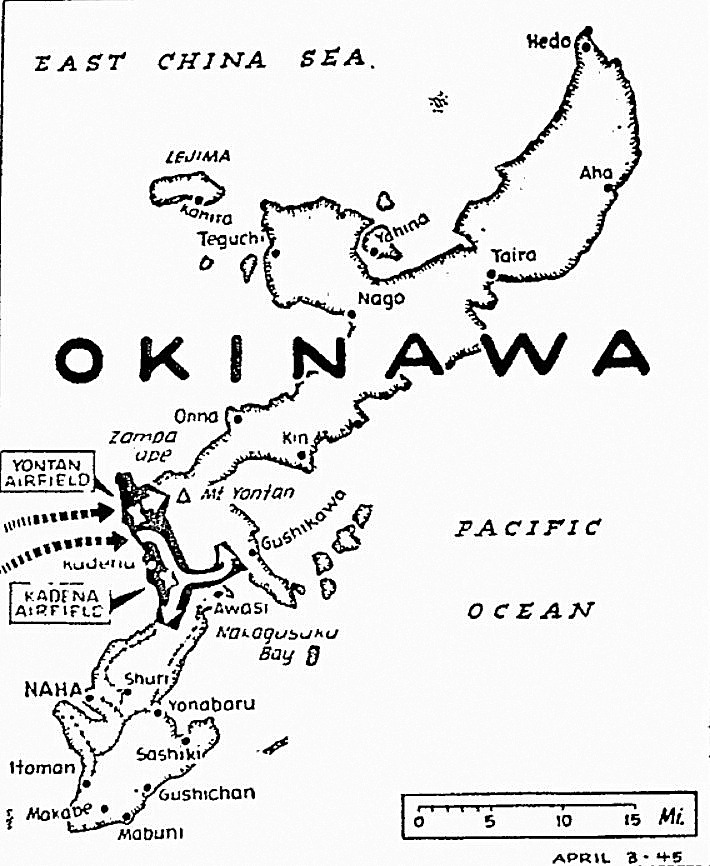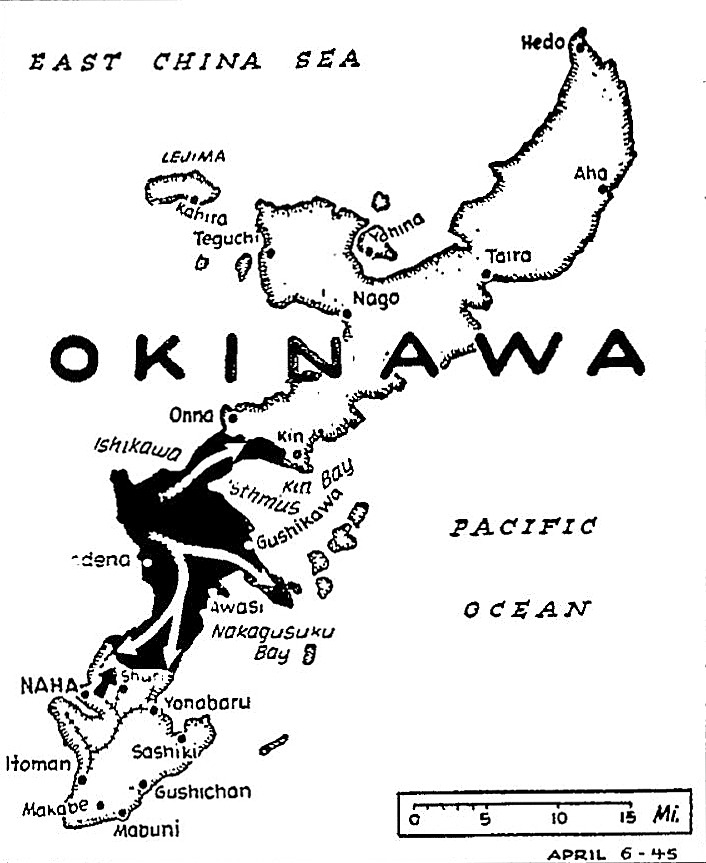Air blockade of Japan sealed
Okinawa assaults cost Japs 1,052 planes
By Lloyd Tupling, United Press staff writer
ABOARD ADM. MITSCHER’S FLAGSHIP OFF OKINAWA – The invasion of Okinawa, viewed as the last step in completing an air blockade of Japan, was the crowning blow of an almost continuous assault which started March 17 and has cost the enemy 1,052 planes destroyed or damaged.
The strategic importance of the island was emphasized today by high-ranking officers who pointed out that only the North Japan Sea which leads to Manchuria and Siberia will be out of striking range of U.S. bombers based on Okinawa.
Strikes at fleet first
Operations against Okinawa started March 17 with strikes against the Imperial Jap Fleet hiding in the Inland Sea. Since that time, Vice Adm. Marc A. Mitscher’s carrier planes have flown more than 8,000 sorties, bagged 1,052 Jap planes, knocked out 20 enemy warships and sank or damaged 200 other vessels, mostly small coastal craft.
The air attack was climaxed yesterday when wave after wave of fighter planes swept Okinawa’s beaches with a curtain of hot lead in front of Lt. Gen. Simon Bolivar Buckner’s Tenth Army troops.
Most of the past two weeks have been spent bombing, rocketing and strafing gun positions, underground hangars, submarine pens and scores of small craft which could have opposed the invasion troops.
Astride supply route
Establishment of air bases on Okinawa will make even more desperate the Jap supply problem which became acute when U.S. planes from Philippines bases closed off the South China Sea. With our air force sitting astride the East China Sea at Okinawa and the Western Pacific at Iwo Jima, Japan’s problem of supply will be doubly difficult.
Air operations from Okinawa will put a double squeeze on the enemy war effort, keeping the remnants of Hirohito’s fleet bottled up in sheltered home waters and making it difficult to haul supplies to troops in northern China or bring in raw materials to the homeland.
Operations to pin down shipping in Japan’s home waters actually started several days before the invasion of Okinawa when U.S. search planes started operating out of Kerama Retto, 15 miles west of Okinawa. Kerama Retto was occupied six days ago.

